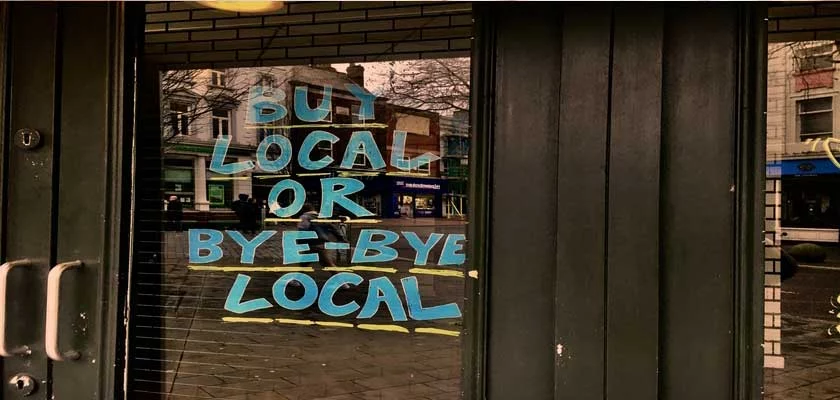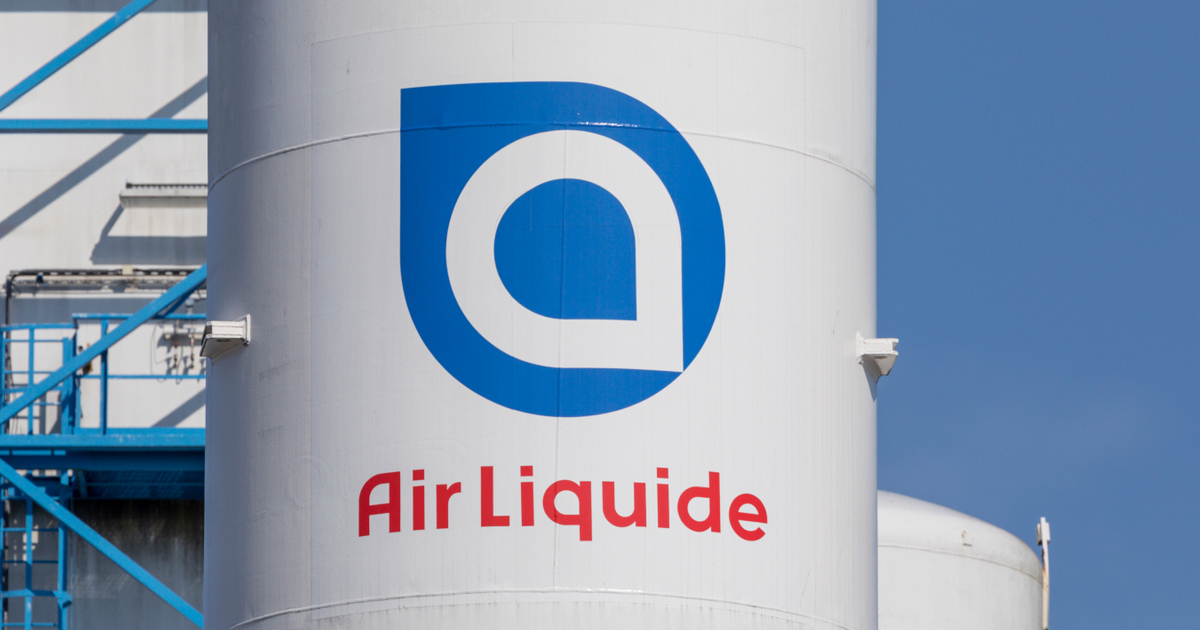How to Improve Local SEO Results: 14 Tips That Will Get Your Business Seen
When you run a small business, marketing it to people in your area can be challenging. You may not have the budget to run ads in the local paper or the resources to call prospective customers. If this is...

When you run a small business, marketing it to people in your area can be challenging. You may not have the budget to run ads in the local paper or the resources to call prospective customers.
If this is the case, implementing a local SEO strategy can bring you new leads, sales, and most importantly, revenue. Looking for a local SEO strategy to grow your business?
Bubblegum Search specializes in SEO auditing and SEO services for small and medium-sized companies in a wide range of different industries. They’ve put together this comprehensive guide to show you 14 simple ways you can improve your local SEO results.
What Is Local SEO?
Local SEO is when you take action to improve your search engine rankings in local search results.
When you’re a small business that focuses on a specific town or city, your approach to SEO is going to be significantly different from that of a company with a national presence.
You want to appeal to the people who are most likely to buy your products or services. People might not have heard of your business but would be interested if they saw you were near them.
Let’s say that you’re a plumber working in Whoville. When people search for ‘Emergency plumbing services near me’ or ‘Toilet unblocking in Whoville’, you want to make sure you’re as close to the top of Google as possible.
97% of people have searched online to find a local business. This means if you can get your local SEO in order, you can gain a significant advantage in the marketplace.
14 Ways to Improve Your Local SEO
Boosting your local SEO can seem daunting, especially if you’re a small business with a small marketing budget.
However, the good news is that improving local SEO is simpler than you might think. All you need is to think methodically and do your research.
Here’s how to improve local SEO results for your business in 14 easy steps.
1. Claim your Google Business Profile
If local SEO is a priority, claiming and optimizing your Google Business Profile (formerly known as Google My Business) is an excellent place to start.
Google Business Profile is a free tool that lets you create an online presence for your business. That way, if people search for your business name, your profile will appear on Google.
Not only this, but your business is more likely to appear in the ‘Google Local Pack’ – the box at the top of a local Google search.
5% of Google Business Profile views lead to a website visit, phone call, or direction request, so setting up a profile is a definite quick win.
2. Sign up for online business directories
Relevant and reputable online business directories show Google that your site is valuable enough to link to and can help drive traffic to your website.
Quality is better than quantity here. It’s better to feature one high-quality business directory than one-hundred spammy ones.
Do some research to see which online business directories operate in your area. It can be helpful to check your competitor’s backlinks and see which business directories they’re on. We’ll look at analyzing your competitors in a bit more detail later.
Here’s a handy hint – see if your local council, educational establishment, or government organization has a directory on their website. As these domains are seen as more trustworthy, you’re more likely to get a boost from them.
3. Set up internal linking on your website
External linking is vital for SEO, but did you know internal linking can also help improve your search engine presence?
Internal linking across your pages gives Google additional context about your website, giving sections that are visited less frequently a boost in the search engine results.
Over four out of five internal link opportunities are overlooked. This means getting the links right on your website can be incredibly valuable when it comes to improving local SEO.
4. Audit your meta titles and descriptions
When done correctly, meta titles and descriptions can help to improve your local SEO results. They can have a direct impact on encouraging prospective customers to come and visit your website.
Think of your page meta titles and descriptions as your shop window on Google and Bing. If your shop window looks enticing, people will come and check you out.
Make sure you have unique titles and descriptions for each page, include your SEO keywords and the location, and try to include a powerful call to action.
According to a Backlinko study, meta titles between 15 and 40 characters have an 8.6% higher click-through rate than titles outside this range.
5. Start a blog
When you’re responsible for a business, running a blog may be the last thing on your mind. However, valuable and well-thought-out articles not only help you rank for more keywords but can keep people on your site for longer.
While Google hasn’t admitted that the length of time users spend on a website is a positive factor for search engine rankings, it has been heavily implied.
6. Make sure your website is mobile-friendly
88% of people search for a local business on their mobile phone call or visit within 24 hours. This means that if you have a website, you need to make sure it’s mobile-friendly.
If prospective customers have to zoom in on elements or buttons that jump around as the website loads, they’re not likely to stick around for long. What’s more, if users quickly leave your website, this can impact where you rank in the search results.
Google has a tool you can use to see if your website is mobile-friendly and get feedback on how you can make things better.

7. Ask for reviews
Five-star reviews can be a critical factor in improving your presence when it comes to local SEO. Search engines like Google value feedback from objective customers, and it can be a defining factor when it comes to ranking businesses.
One of the best ways to get reviews is to ask happy customers to leave feedback on your Google Business Profile. That way, any positive feedback is front and center when prospective buyers search for you online.
Be sure to respond to all reviews, both positive and negative. 45% of people say they’re more likely to visit a business that responds to negative feedback.
8. Focus on local keywords
Let’s say you deliver pizzas. There are over 774 million results for ‘pizza delivery service’ in Google, which means if you try and rank for this keyword, you’re going to struggle.
The best strategy is to focus on local keywords like ‘pizza delivery in X’ or ‘pizza delivery service in Y’. Not only will you find it easier to get on the first page of the search engine results, but Google can use this additional info to show your business to local searchers.
75% of people never go past the first page of Google, so you want to try and get that coveted top spot where you can!
9. Check out your competition
If you’re asking the question, ‘how can I improve my local SEO results?’, one of the best ways to do this is to look at what your rivals are doing in the search engines.
When you know where your competitors are ranking for specific keywords, you’ll know how easy or hard it will be to leapfrog over them in search engines. Look at their websites, the keywords they’re using, and who is linking to them.
Be sure to focus on competitors of a similar size and that focus on a similar area to you. While it might be tempting to beat Apple, McDonald’s, or Tesco at their own game, you’re not going to get too far!
10. Set up location pages
If you offer services in different towns, cities, or even villages, it’s a good idea to create individual location pages for each area.
That way, you can really drill down into specific keywords and increase the chances of ranking when customers search for ‘X in Y’.
If you do set up individual pages, make sure the content on each is different. When you have duplicate content on your website, Google can have a hard time knowing which version to show in the search engine results. This means it could potentially show the wrong page to a potential buyer.
It’s estimated that nearly one in three pages across the internet is duplicate content – scary stuff!
11. Investigate your website speed
If you’re looking at how to improve local SEO results, the answer might lie in how fast your website loads.
A slow-loading website can have a negative impact on how long people stay on your site, which in turn, can push your site down the search engine rankings. Even a one-second delay can mean 11% fewer page views.
Some of the things you need to do to improve your website speed are pretty technical, so you may need a web developer to take care of this for you. However, a good starting point is to look at the size of the images you use on your pages. If you’re uploading 10Mb photos, it might be time for a spring clean!
12. Work on your NAP citations
Links to your website can help improve your local SEO results. However, if you’re struggling to get backlinks, other websites listing your contact details can be beneficial.
NAP stands for ‘Name, Address, and Phone Number’ and has been cited by MOZ as the fifth most crucial ranking factor for local SEO, as it helps show you are a legitimate business.
Try and feature in as many places as you can and keep your details accurate – if your address or phone number changes, it’s essential to update any listings.
13. Become part of the local community
As John Donne famously said: ‘no man (or business) is an island’.
By connecting with others in your local community, you’re more likely to get those all-important backlinks needed to boost your SEO and make more people aware of your brand.
Send press releases to local newspapers, offer to guest post on community websites and sponsor important events. Not only will you get publicity online, but offline too!
14. Keep checking your stats
Bubblegum Search’s final pointer will help you improve local SEO results – keep an eye on your statistics.
SEO isn’t something that can be done once and forgotten about. It’s essential to keep on top of it and make tweaks to ensure you stay at the top of the search engine results.
The Google algorithm could change, a website that links to you could disappear, or your nearest competitors could up their local SEO game. This could lead to you falling off the first page of the results.
There are a lot of great free tools out there that can help you monitor not only how many people are visiting your website, but where you rank in the search engines. Google Analytics, Google Search Console, and Bing Webmaster Tools are good places to start.
Improving Local SEO With Confidence
Bubblegum Search hopes this guide has given you some inspiration on how to improve local SEO results.
Even the smallest company can rank in the top spot of Google if it has a solid local SEO strategy. Plan ahead, check out the competition and keep an eye on your stats. You’ll improve your local SEO ranking in no time at all!

 FrankLin
FrankLin 










![How Consumers Prefer to Interact With Brands [HubSpot Blog Survey]](https://blog.hubspot.com/hubfs/customer-interact-2017.jpg#keepProtocol)





















